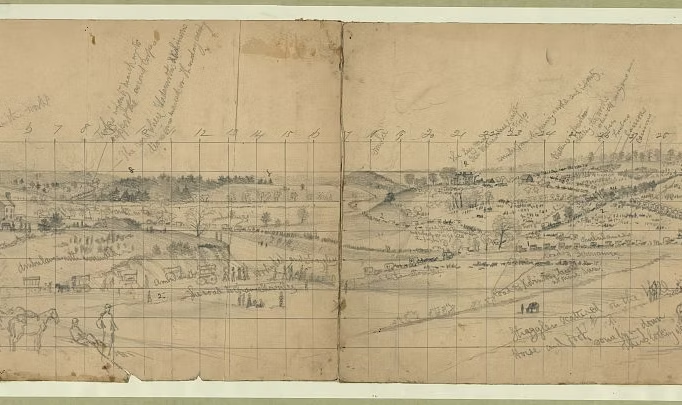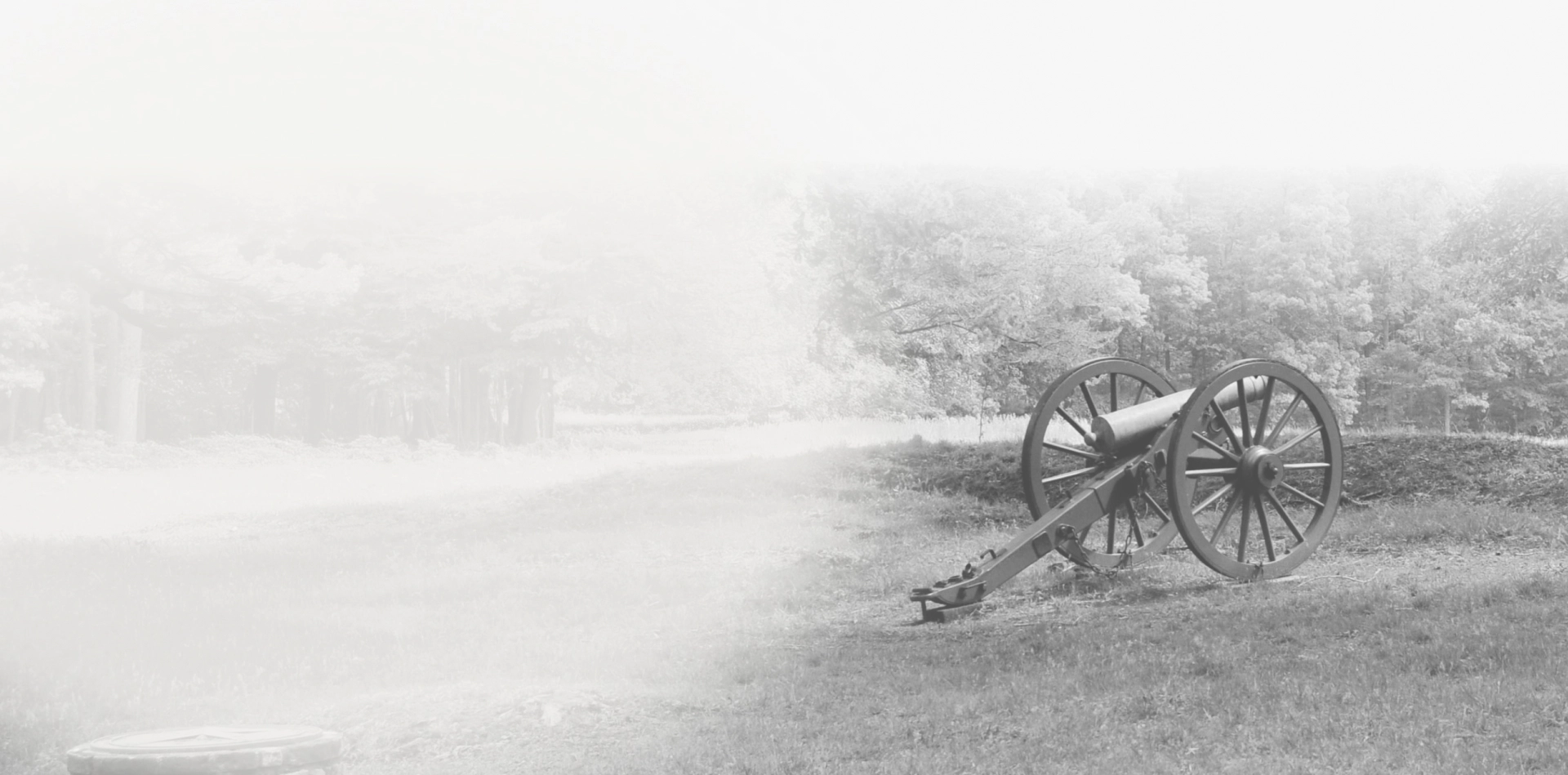
The Historic Crossroads of the Germanna Plank Road and the Orange Turnpike

History
Battle of Chancellorsville
Following the smashing success of Gen. Thomas J. “Stonewall” Jackson’s flank attack at Chancellorsville on the evening of May 2, 1863, the land around the Wilderness Tavern became a field hospital for the Army of Northern Virginia’s Second Corps. The area proved ideal due to its accessibility to the battlefield’s wounded, a cluster of useful structures, and a good nearby water source.
Several accounts tell us about this hospital. Dr. Thomas Fanning Wood, Assistant Surgeon for the 3rd North Carolina Infantry noted that his regiment’s medical facilities “consist of a few small houses and a number of hospital tents.” Stonewall Brigade hospital steward John Samuel Apperson, who grew up in the area, penned in his diary for May 2 and 3, “These were trying scenes on ground once so familiar.”
Gen. Jackson was, of course, the most famous patient treated at the Second Corps field hospital. Wounded in the left arm by a volley fired by the 18th North Carolina, Jackson received transportation via ambulance back through the Confederate lines behind where the attack originated. Pvt. David Kyle, 9th Viriginia Cavalry, remembered that after Jackson’s ambulance stopped at Dowdall’s Tavern where Rev. Melzi Chancellor supplied some spirits, they “then droved on up the pike to the Old Wilderness Tavern, where Mr. W. M. Simms lived at the time. They drove out on the right [north] of the pike in the field to a hospital tent,” where Dr. Hunter McGuire and a team of surgeons amputated Jackson’s wounded arm.
Dr. McGuire had Gen. Jackson moved to Guinea Station on May 4 to recover but died there six days later. According to John Apperson’s diary, the hospital remained in the area around Wilderness Tavern until May 9, when it also moved to Guinea Station.
Before the war, the Wilderness Tavern complex took advantage of its location at the intersection of the Germanna Plank Road and Orange Turnpike. Owed most recently by William M. Simms, Wilderness Tavern and its several associated outbuildings were just east of “Ellwood” the J. Horace Lacy House. Wilderness Run meandered between the two locations.


History
Battle of The Wilderness
On May 5, 1864, as the Battle of the Wilderness was just developing, the area around Wilderness Tavern became a reserve area where designated troops from Gen. Gouverneur K. Warren’s Fifth Corps, and eventually Gen. John Sedgwick’s Sixth Corps, remained stationed until receiving further orders to enter the battle. This area also saw heavy ambulance traffic as wounded men received transportation off the battlefield to adjacent field hospitals.
Moving out early on the morning of May 5, Gen. Charles G. Griffin’s Division of the Fifth Corps headed west on the Orange Turnpike. Following close by was Gen. James Wadsworth’s Division. Gen. Samuel Crawford’s Division maneuvered south into the Wilderness via Parker’s Store Road. Remaining behind at Wilderness Tavern and arrayed across acres now preserved by CVBT was Gen. John C. Robinson’s Division, minus one brigade (Denison’s), which was sent to help connect Wadsworth and Griffin. Soon called into action to help unite the other divisions, Robinson’s remaining two brigades left the Wilderness Tavern area and Gen. George W. Getty’s Sixth Corps division occupied it.
At about 10:30 am Getty’s Division moved from the Wilderness Tavern east and then south down the Brock Road to meet A.P. Hill’s oncoming Confederates and keep the Brock Road open and secure.
According to a period map in The Medical and Surgical History of the War of the Rebellion, it appears that one of the Fifth Corps field hospitals was located either on or adjacent to the easternmost tract of land at the Wilderness Crossroads now owned by CVBT. In addition, a period sketch by Edwin Forbes, shows “ambulances with wounded” streaming by Wilderness Tavern. Both of these primary sources provide evidence that these acres were the scene of terrible suffering, just as they had been during the Chancellorsville Campaign.
As previously mentioned, William M. Simms owned this land during the Civil War. It included the grounds of the historic Wilderness Tavern and its associated outbuildings. It is believed that the remains of the tavern itself are beneath the eastbound lanes of modern Route 3, added during road expansion in the 1970s.
Preservation Story
On December 31, 2012, CVBT closed on the purchase of an 81-acre tract, now designated as “Wilderness Crossroads II.” This land consists of three closely situated but non-contiguous parcels, all of which have significant frontage on the historic Orange Turnpike, present-day Route 3. These three properties, which are all on the north side of the turnpike near its former intersection with the Germanna Plank Road, are directly across from the 93-acre “Wilderness Crossroads I” tract that CVBT acquired in 2009. While all are located outside of the National Park Service boundary, the properties are of such historical significance that CVBT was committed to acquiring them once the necessary funding became available. Founding CVBT Board members John Mitchell and Enos Richardson were instrumental in acquiring and preserving these key parcels.
The land today is well preserved, and it appears much as it did during the time of the Civil War. The purchase price for these three parcels was $575,000. CVBT was able to purchase this land using matching grants from both the Commonwealth of Virginia and the American Battlefield Protection Program, along with assistance from our good friends at the Civil War Trust (now the American Battlefield Trust). Approximately 28 acres are leased out for farming with the remaining areas being wooded.

NEWSLETTER SIGN-UP
Join our community! Sign up for our newsletter to receive exclusive updates, event information, and preservation news directly to your inbox.